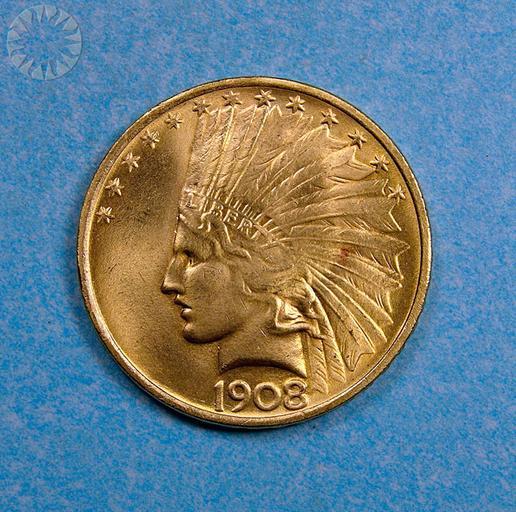MAKE A MEME
View Large Image

| View Original: | United_States,_10_Dollars,_1908.jpg (640x635) | |||
| Download: | Original | Medium | Small | Thumb |
| Courtesy of: | www.flickr.com | More Like This | ||
| Keywords: legendary coins legendarycoins numismatics money smithsonian probably public domain probablypublicdomain round circle SI Neg. 2005-27366. Date: 9/1/2005...In 1905, President Theodore Roosevelt asked sculptor Augustus Saint-Gaudens to lead an effort to redesign American coinage. Saint-Gaudens developed a concept that many consider the most beautiful American coin ever conceived. .In addition to this $20 Dollar coin, Saint-Gaudens also redesigned the $10 coin, or eagle, but did not live to see this effort through to completion. With Saint-Gaudens's passing, the eagle project was entrusted to Chief Engraver Barber. .There was little he could do to bowdlerize the artist's original: Saint-Gaudens had put most of his efforts for high relief coinage into the double eagle. His ten-dollar piece offered modest innovations in terms of its relief, but it didn't awake Barber's opposition to the extent that the double eagle design had. The redesigned eagle was struck through early 1933, essentially in the form in which Saint-Gaudens had created it. .There was one innovation in mid-1908. Theodore Roosevelt frowned on the inclusion of the motto "In God We Trust," on American money. He said religion and commerce didn't mix. So neither the new double eagle nor the new eagle bore the traditional inscription for the first year or so. But Roosevelt would soon be on his way out of office and the motto was reinstituted on both coins. This coin is one of the earlier "godless" ones. When the motto returned, it appeared before the eagle's breast on the reverse..Click here to view the obverse...Credit: Tom Mulvaney (Smithsonian Institution) SI Neg. 2005-27366. Date: 9/1/2005...In 1905, President Theodore Roosevelt asked sculptor Augustus Saint-Gaudens to lead an effort to redesign American coinage. Saint-Gaudens developed a concept that many consider the most beautiful American coin ever conceived. .In addition to this $20 Dollar coin, Saint-Gaudens also redesigned the $10 coin, or eagle, but did not live to see this effort through to completion. With Saint-Gaudens's passing, the eagle project was entrusted to Chief Engraver Barber. .There was little he could do to bowdlerize the artist's original: Saint-Gaudens had put most of his efforts for high relief coinage into the double eagle. His ten-dollar piece offered modest innovations in terms of its relief, but it didn't awake Barber's opposition to the extent that the double eagle design had. The redesigned eagle was struck through early 1933, essentially in the form in which Saint-Gaudens had created it. .There was one innovation in mid-1908. Theodore Roosevelt frowned on the inclusion of the motto "In God We Trust," on American money. He said religion and commerce didn't mix. So neither the new double eagle nor the new eagle bore the traditional inscription for the first year or so. But Roosevelt would soon be on his way out of office and the motto was reinstituted on both coins. This coin is one of the earlier "godless" ones. When the motto returned, it appeared before the eagle's breast on the reverse..Click here to view the obverse...Credit: Tom Mulvaney (Smithsonian Institution) | ||||